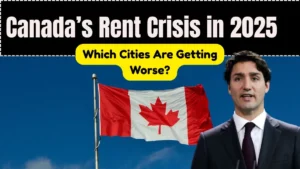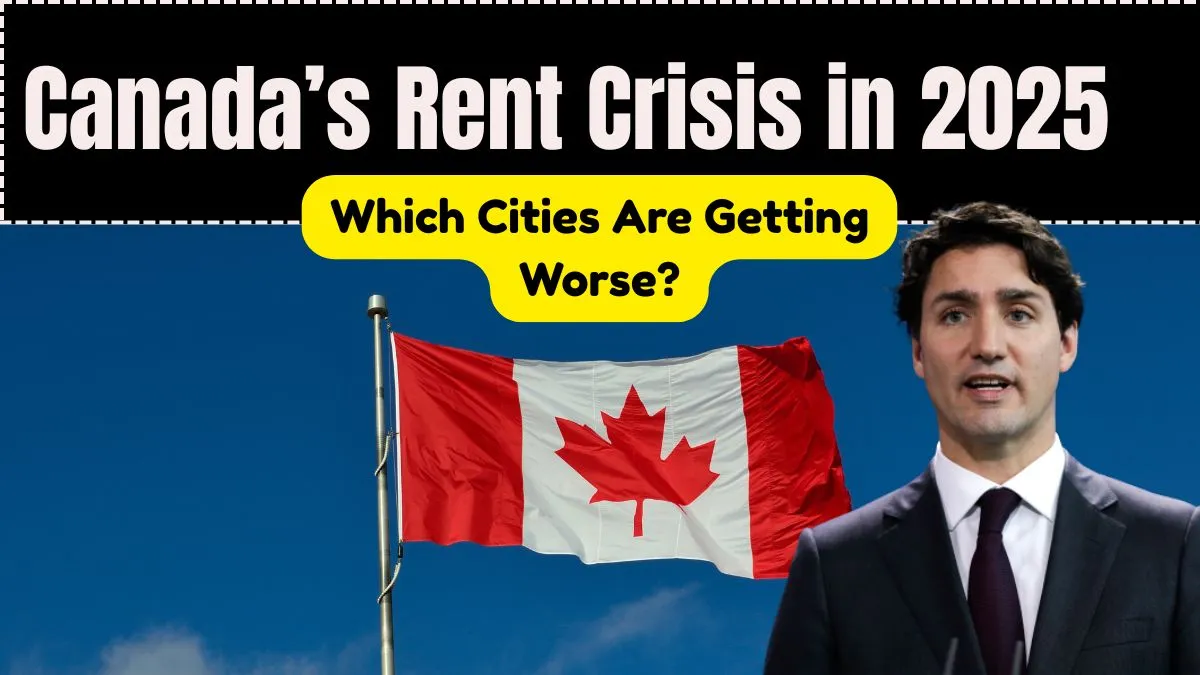Canada’s rental housing landscape has become more severe in 2025, with some cities witnessing record-breaking rent increases while others maintain relative stability. For renters, affordability continues to be a growing concern as demand far outpaces supply, especially in urban areas. This rental divide is not only reshaping how Canadians live but also influencing migration patterns and government policies.

Cities Facing the Steepest Rent Increases
In 2025, Toronto and Vancouver have emerged as the hardest-hit cities, where average monthly rents have reached new highs. A combination of rapid immigration, limited housing construction, and investor-driven developments have intensified the competition for rental units.
These cities are also seeing an increasing number of renters spending more than 30% of their income on housing, making affordability a serious concern.
What’s Keeping Rents Stable in Other Cities?
While Toronto and Vancouver struggle with soaring prices, cities like Montreal, Quebec City, and Winnipeg have shown relative rent stability. This can be attributed to stronger rent control policies and a more balanced housing supply.
These areas have become more attractive to individuals and families relocating from unaffordable markets in search of better quality of life and manageable rent expenses.
Key Drivers of the 2025 Rent Crisis
Several factors are behind the worsening rent situation:
-
Low Housing Inventory: Construction has not kept pace with demand, especially in high-growth regions.
-
Immigration and Urbanization: A surge in new residents continues to concentrate population growth in major cities.
-
Slow Wage Growth: While housing costs increase, wages have remained relatively stagnant, eroding affordability.
-
Investment Properties: A rise in short-term rentals and investor purchases has reduced the long-term rental stock.
How the Crisis is Affecting Canadians
The consequences of the rent crisis are being felt in all corners of society:
-
Delayed Home Independence: Young adults are staying longer with family or in shared spaces.
-
Rising Household Density: More families are forced to share homes or downsize.
-
Shift to Secondary Cities: There’s a noticeable migration trend to smaller cities offering more affordable rent.
Government Measures and Reforms in Motion
In response to mounting pressure, all levels of government have introduced reforms aimed at curbing the crisis:
-
Federal Funding: Increased investments in affordable housing projects.
-
Municipal Policies: New zoning laws, rental protection rules, and incentives for developers to build rental stock.
-
Review of Rent Control Laws: Efforts to modernize rent regulation and discourage investor hoarding of properties.
FAQs
Which cities have the highest rent hikes in Canada in 2025?
Toronto and Vancouver are currently experiencing the sharpest rent increases, driven by housing shortages and high demand.
Why are Montreal and Quebec City seeing stable rents?
These cities benefit from stronger rent regulations and a more consistent supply of rental units, keeping prices relatively steady.
How are renters adapting to the rising costs?
Canadians are increasingly turning to shared living, moving to more affordable cities, or postponing independent housing decisions.
What is the government doing to address the rent crisis?
Governments are increasing funding for affordable housing, updating zoning laws, and exploring changes to rent control policies to protect tenants.
Are any long-term solutions being discussed?
Yes, proposals include boosting housing supply through new developments, tax incentives for landlords, and strict regulations on investor-owned rentals.
Click here to know more.
Aanchal is a passionate writer with a keen interest in storytelling, content creation, and creative expression. She enjoys exploring diverse topics and crafting engaging narratives that captivate readers.

